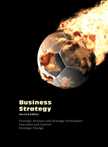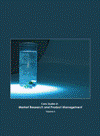Business Strategy
 |
Details
Textbook:
Pages : 323;
Paperback;
210 X 275 mm approx.
Workbook:
Pages :
321; Paperback;
210 X 275 mm approx
Pricing
Textbook Price: Rs. 750 ;
Workbook Price: Rs. 700;
Available only in INDIA
Detail Table of Contents
Click below to view
HTML
External Environment Analysis : Chapter 4
SUMMARY:
Environmental scanning involves capturing information about the firm’s external environment in terms of opportunities and threats. It is a proactive exercise to ensure that changes in the external environment – either remote or operating – do not take the firm by surprise.
|
|
The Five Forces model is a framework for industry analysis. The five forces that determine the competitive intensity and the attractiveness of a market are: the bargaining power of the buyers, the bargaining power of the suppliers, the threat of new entrants, the threat of substitute products, and the intensity of rivalry amongst existing firms.
In order to create a favorable position against the five competitive forces, an effective competitive strategy takes offensive or defensive action, such as: positioning the firm so that its capabilities provide the best defense against the existing array of competitive forces; influencing the balance of forces through strategic moves, thereby improving the firm’s relative position; or anticipating shifts in the factors underlying the forces and responding to them, thereby exploiting change by choosing a strategy appropriate to the next competitive balance before rivals recognize it.



